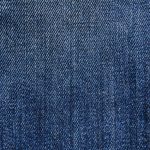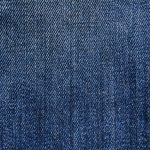Scuba stretch fabric feels smooth and thick but moves with you thanks to its polyester or nylon base blended with spandex. It’s inspired by diving gear, designed to hold shape while offering comfy flexibility, moisture resistance, and warmth. You’ll find it in bodycon dresses, blazers, and activewear because it looks sharp without stiffness. It’s also easy to care for and durable. Keep exploring to uncover how it’s made and how it stacks up against similar fabrics.
Table of Contents
Key Takeaways
- Scuba stretch fabric is a smooth, double-knit material with polyester or nylon and spandex for strength and flexibility.
- It features a foam backing that provides softness, insulation, and a slightly cushioned texture.
- The fabric offers excellent stretch recovery, moisture resistance, and retains shape after wear or washing.
- It is thicker than regular spandex blends but lighter than neoprene, balancing structure and flexibility.
- Commonly used for bodycon dresses, skirts, jackets, and activewear due to its smooth, structured fit and durability.
Origin and Inspiration Behind Scuba Stretch Fabric
Although scuba stretch fabric has become a staple in modern fashion, its origins trace back to the world of diving gear. You mightn’t realize it, but this fabric was initially developed to provide divers with a smooth, flexible, and insulating material.
The need for comfort and durability underwater inspired its unique texture and thickness. When you wear scuba stretch fabric today, you’re benefiting from decades of innovation aimed at enhancing mobility and protection in challenging conditions.
Designers adapted these practical qualities for everyday wear, creating garments that hold shape well and feel comfortable against your skin.
Key Components and Composition
Because scuba stretch fabric combines comfort with durability, its unique composition plays an important role in achieving these qualities.
When you look closely, you’ll find four key components that define this fabric:
- Polyester or Nylon Base: These synthetic fibers provide strength and resilience, making the fabric sturdy yet flexible.
- Spandex Blend: This adds the vital stretch, letting the fabric move with you without losing shape.
- Double-Knit Construction: This technique creates a smooth, thick surface, giving the fabric its signature firmness and structure.
- Foam Backing: A thin foam layer adds softness and insulation, enhancing comfort and body contouring.
Together, these elements create a fabric that feels both supportive and comfortable—perfect for trendy apparel and activewear.
Unique Properties and Benefits
When you wear scuba stretch fabric, you’ll notice how its unique blend offers impressive support without sacrificing comfort. This fabric is thick yet flexible, giving you a smooth, structured fit that moves with you.
Its excellent stretch recovery means it won’t lose shape, no matter how often you wear or wash it. The material is also moisture-resistant, so it keeps you feeling dry and fresh throughout the day.
Plus, its dense knit blocks out wind and retains warmth, making it practical beyond looks. You’ll appreciate how easy it’s to care for—resistant to wrinkles and quick to dry.
Common Uses in Fashion and Apparel
Since scuba stretch fabric combines structure with flexibility, designers often choose it for garments that require both form and movement.
Scuba stretch fabric perfectly balances structure and flexibility, making it ideal for garments that move with you.
You’ll find this fabric in many stylish and functional pieces. Here are four common uses in fashion and apparel:
- Bodycon dresses – It hugs your shape while allowing easy movement.
- Skirts – Offers a sleek silhouette with comfortable stretch.
- Jackets and blazers – Gives structure without stiffness.
- Activewear – Combines durability and flexibility for workouts.
When you wear scuba stretch fabric, you get durability and a polished look without sacrificing comfort.
Its smooth finish and resilience make it a favorite for modern, versatile wardrobes. You’ll appreciate how it holds its shape while moving with you.
How Scuba Stretch Fabric Is Manufactured
Although scuba stretch fabric looks simple on the surface, its manufacturing involves a precise combination of materials and techniques to achieve both stretch and structure.
You start with a blend of polyester or nylon with spandex, which gives the fabric its characteristic elasticity. This blend is knitted using a double-knit process, creating a smooth, dense texture on both sides.
Then, the fabric undergoes a heat-setting phase, where heat and pressure lock in the shape and firmness without sacrificing flexibility. This step also enhances the fabric’s resistance to wrinkles and sagging.
Finally, the material is finished with additional treatments to improve its durability and feel. By understanding this process, you can appreciate why scuba stretch fabric holds its form so well in fashion.
Care and Maintenance Tips
To keep your scuba stretch fabric looking its best, you’ll want to follow specific washing instructions and drying recommendations.
Proper care also includes smart storage practices to maintain its shape and texture.
Let’s explore how to handle each step effectively.
Washing Instructions
When you care for scuba stretch fabric properly, you’ll extend its lifespan and keep its vibrant look intact.
Follow these washing instructions to maintain its quality:
- Use cold water and a gentle cycle to avoid damaging the fabric’s fibers.
- Choose a mild detergent without bleach or fabric softeners, which can break down the material.
- Turn your garment inside out before washing to protect the surface from friction.
- Avoid washing with heavy or abrasive items that could cause pilling or snags.
Drying Recommendations
After washing your scuba stretch fabric carefully, how you dry it plays a big role in keeping its shape and texture intact.
Avoid using a tumble dryer, as high heat can damage the fabric’s elasticity and cause shrinkage. Instead, lay your garment flat on a clean towel and reshape it gently to its original form.
Let it air dry away from direct sunlight or heat sources to prevent fading and fabric weakening. If you must hang it, use a padded hanger to avoid stretching the shoulders.
Never wring or twist the fabric, since this can distort its smooth surface.
Storage Best Practices
Although scuba stretch fabric is durable, proper storage is essential to preserve its shape and texture.
When you store your scuba garments, follow these best practices:
- Fold your items gently to avoid creases and stretching.
- Store them in a cool, dry place away from direct sunlight to prevent fading and fabric damage.
- Use breathable garment bags instead of plastic to allow air circulation and reduce moisture buildup.
- Avoid hanging heavy scuba pieces, as this can cause them to stretch out of shape over time.
Comparing Scuba Stretch Fabric to Similar Textiles
When you compare scuba stretch fabric to neoprene, you’ll notice differences in stretch and recovery that affect comfort and fit.
You’ll also find that scuba has a lighter texture and weight, making it more versatile for everyday wear.
Understanding these contrasts helps you choose the right fabric for your needs.
Scuba Vs Neoprene
If you’ve ever wondered how scuba stretch fabric stacks up against neoprene, it helps to understand their core differences. Both share a similar spongy texture, but their uses and features vary.
- Material: Scuba stretch is a double-knit polyester blend, while neoprene is a synthetic rubber.
- Weight: Scuba stretch is lighter, making it great for fashion, whereas neoprene is heavier and designed for insulation.
- Flexibility: Scuba stretch offers more stretch and breathability, perfect for comfort; neoprene is stiffer but provides thermal protection.
- Applications: You’ll find scuba stretch in trendy apparel; neoprene dominates in wetsuits and protective gear.
Understanding these distinctions helps you choose the right fabric for your needs.
Stretch and Recovery
Because stretch and recovery define how a fabric moves with you and bounces back, understanding these qualities in scuba stretch fabric compared to similar textiles is essential.
Scuba stretch fabric offers a balanced stretch, giving you enough flexibility without losing its shape. Unlike pure spandex blends that stretch extensively but can sag over time, scuba maintains a firmer recovery, snapping back quickly after movement.
Compared to neoprene, scuba stretch is lighter and more forgiving, providing smoother flexibility without the bulk. If you need a fabric that adapts to your movements yet holds its form for a polished look, scuba stretch delivers.
You’ll appreciate how it supports dynamic wear without the constant need to adjust or worry about fabric distortion.
Texture and Weight Differences
Although scuba stretch fabric shares some characteristics with neoprene and spandex blends, its texture and weight set it apart in noticeable ways.
When you compare them, keep these points in mind:
- Texture: Scuba stretch feels smoother and less rubbery than neoprene, offering a sleek finish.
- Weight: It’s lighter than neoprene but denser than typical spandex blends, striking a balance between bulk and flexibility.
- Thickness: Scuba stretch has a consistent, medium thickness that adds structure without stiffness.
- Surface: Unlike spandex blends that can be shiny or matte, scuba stretch usually has a matte, slightly cushioned surface.
Understanding these differences helps you choose the right fabric for your project, ensuring comfort, durability, and style.
Frequently Asked Questions
Is Scuba Stretch Fabric Eco-Friendly or Sustainable?
You shouldn’t expect scuba stretch fabric to be eco-friendly since it’s usually made from synthetic materials like polyester and spandex. These aren’t biodegradable and often require energy-intensive production, so it’s not considered sustainable.
Can Scuba Stretch Fabric Be Used for Outdoor Gear?
You might not expect it, but scuba stretch fabric can work for outdoor gear. Its sleek, smooth texture contrasts with rugged environments, offering durability and flexibility, though it’s not ideal for extreme weather or heavy abrasion situations.
How Does Scuba Stretch Fabric Perform in Extreme Temperatures?
You’ll find scuba stretch fabric handles moderate temperatures well, but it isn’t ideal for extreme heat or cold. It offers some insulation but can trap heat or feel stiff in very low temperatures.
Is Scuba Stretch Fabric Hypoallergenic or Skin-Friendly?
Oh sure, scuba stretch fabric’s hypoallergenic powers rival a superhero’s cape—except it’s just skin-friendly, breathable, and gentle. You won’t break out, but don’t expect it to cure allergies or summon unicorns either.
What Are the Best Accessories to Pair With Scuba Stretch Clothing?
You’ll want bold statement jewelry, like chunky earrings or layered necklaces, to complement scuba stretch clothing. Pair it with sleek ankle boots or heels, and a structured handbag to enhance your modern, polished look effortlessly.
- Tetron Fabric for Marine Applications: Durability and Use Cases - June 18, 2025
- Tetron Fabric for Outdoor Furniture: Weather Resistance and Care - June 18, 2025
- Tetron Fabric for Wall Coverings: Style and Application Tips - June 18, 2025







